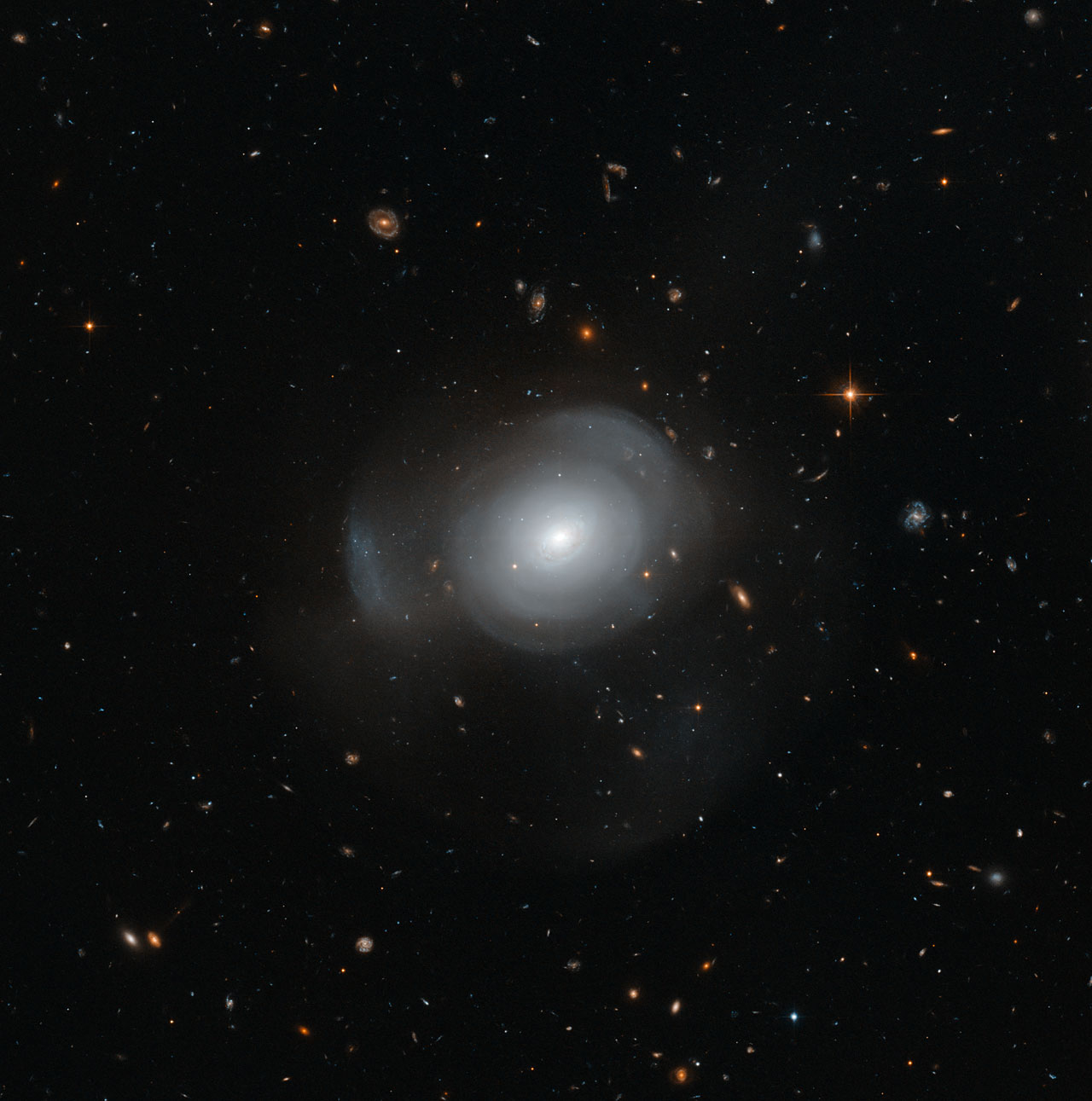Soft shells and strange star clusters (Hubble Space Pic)

The beautiful, petal-like shells of galaxy PGC 6240 are captured here in intricate detail by the NASA/ESA Hubble Space Telescope, set against a sky full of distant background galaxies. This cosmic bloom is of great interest to astronomers due to both its uneven structure, and the unusual clusters of stars that orbit around it — two strong indications of a galactic merger in the recent past.
PGC 6240 is an elliptical galaxy that resembles a pale rose in the sky, with hazy shells of stars encircling a very bright centre. Some of these shells are packed close to the centre of the galaxy, while others are flung further out into space. Several wisps of material have been thrown so far that they appear to be almost detached from the galaxy altogether.
Astronomers have studied PGC 6240 in detail due to this structure, and also because of its surrounding globular clusters — dense, tightly packed groups of gravitationally bound stars that orbit galaxies. Over 150 of these clusters orbit our own galaxy, the Milky Way, all composed of old stars.
All the globular clusters around a certain galaxy form at approximately the same time, giving them all the same age. This is echoed within the clusters — all the stars within a single cluster form at around the same time, too. Because of this, most galaxies have cluster populations of pretty similar ages, both in terms of overall cluster, and individual stars. However, PGC 6240 is unusual in that its clusters are varied — while some do contain old stars, as expected, others contain younger stars which formed more recently.
more
http://www.spacetelescope.org/news/heic1318/
